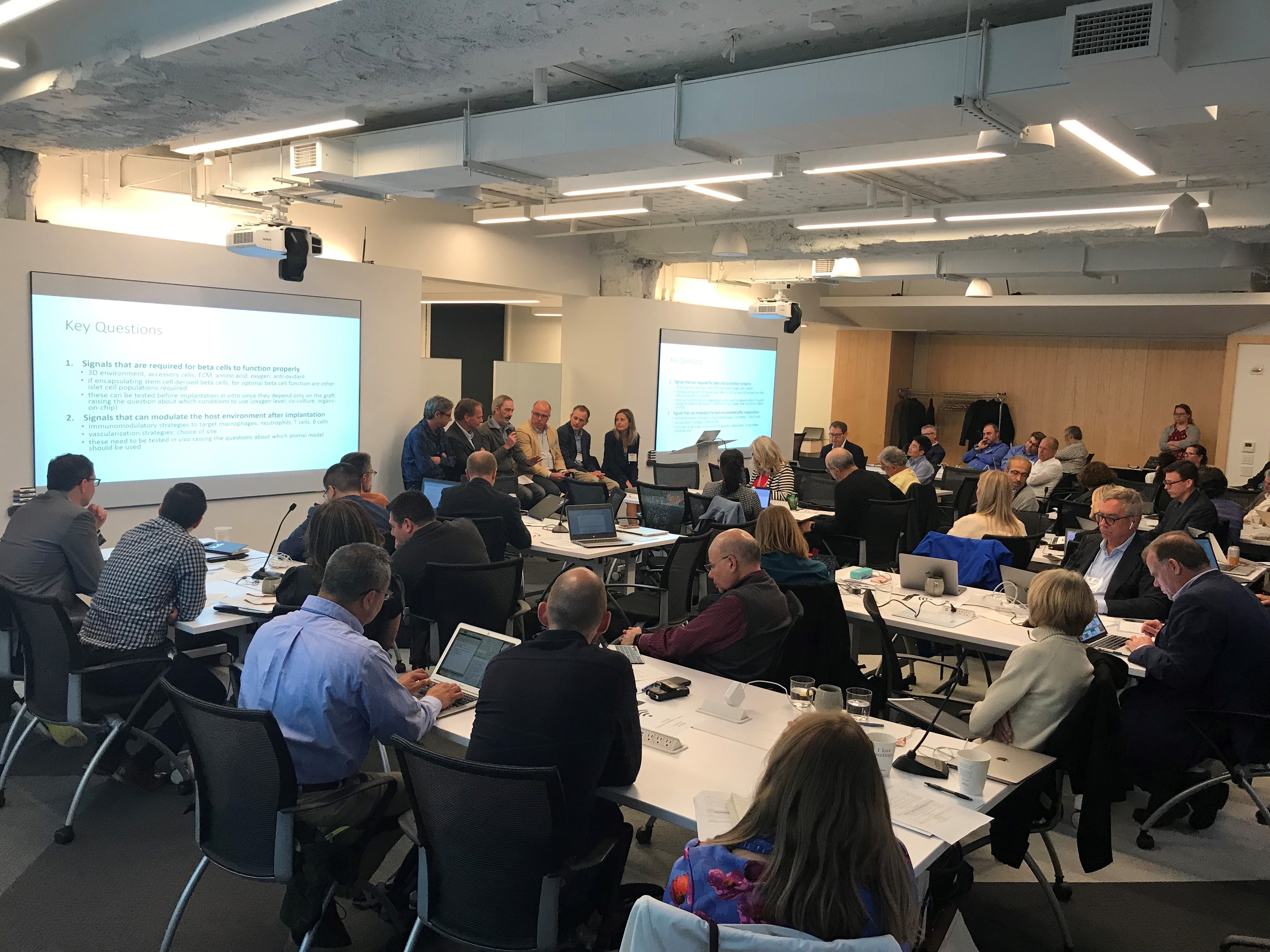
The Breakthrough T1D Spring Beta Cell Replacement Consortium meeting, held recently in NYC, allowed 55 researchers from a diversity of destinations and expertise to exhibit beta cell replacement progress in a forum that encourages partnerships and real-time conversations.
According to the rotating structure of the meeting, researchers who didn’t present at the meeting expounded upon exciting data regarding cell supply and scaling, and the techniques necessary to protect islets from the body’s immune system. Importantly, close to 40% of the spring Consortium meeting was allocated to networking, panel discussions and breakout sessions. The consortium’s attendees addressed gaps in knowledge and reported about the ways that Breakthrough T1D and the consortium aid experts in moving type 1 diabetes (T1D) research forward.
Breakthrough T1D supports researchers by creating an atmosphere of open discourse, where participants routinely share negative data as well as positive results. Cristina Nostro, Ph.D., principal investigator in the McEwen Centre for Regenerative Medicine, explained that this opportunity to be open with other researchers is crucial, because negative data is rarely shared or published. “Being able to explain your challenges allows people to move things along faster. At the end of the day, if you don’t share this type of information you end up repeating experiments that other people may have done in the past and failed.”
That means the consortium is accelerating the T1D field and helping save time and funding, according to Omid Veiseh, Ph.D., assistant professor in the department of bioengineering at Rice University. “One of the biggest values of these open presentations is the new opportunities that emerge, which can be used by the entire consortium. That allows you to make more rapid progress, and leverage the resources more efficiently.”
At the end of the day, if you don’t share this type of information you end up repeating experiments that other people may have done in the past and failed.”
Through the consortium model, Breakthrough T1D helps facilitate collaborations. Researchers are put in a position to meet others whose ideas may work in synergy with their own. Veiseh noted that it’s easy for him to simply dial a noted researcher when he has a problem to solve, something that wouldn’t be possible without the consortium. “This is a hard problem, and you need resources and know-how from a wide variety of disciplines, including immunologists, transplant surgeons and biomaterials experts. There are people I can go to when I have questions or my trainees have questions. We know who the experts are.”
Toby Coates, Ph.D., professor of medicine-transplantation at the University of Adelaide, said that simply having leaders from around the world in one physical space is also indispensable. “Getting everyone together in the same room is fantastic for intellectual stimulation and an exchange of ideas. That’s something that can only happen when a consortium meets together and moves forward together.”
Breakthrough T1D offers financial incentives that help postdoctoral researchers get their career going or encourage established researchers to broaden the scope of their work to include T1D research. Two researchers mentioned Breakthrough T1D’s willingness to pursue expertise from elsewhere as a major positive. “What I liked about Breakthrough T1D was the way they were embracing and trying to encourage people from outside of the diabetes discipline to come into the field. That’s the big difference. They’re looking for game-changers and disruptors. You don’t have to be in the club to start off and participate in things,” said Coates.
Peter Thorn, Ph.D., chair of molecular and cellular physiology at the University of Sydney, said he wasn’t in T1D research until a few years ago. Now with Breakthrough T1D’s support, half of his postdocs are working directly on T1D topics, and his lab has transitioned from one focused only on pure cell biology. “I’m getting toward the end of my scientific career, and I just felt there’s a chance I can actually work on things that are relevant to disease. I think that’s an important transition, and many scientists don’t do that.”